
Facilities and equipment
This section of the Novartis RLT Institute reviews the considerations in setting up the facilities and equipment required to provide radioligand therapy (RLT).
Key spaces
Treatment room
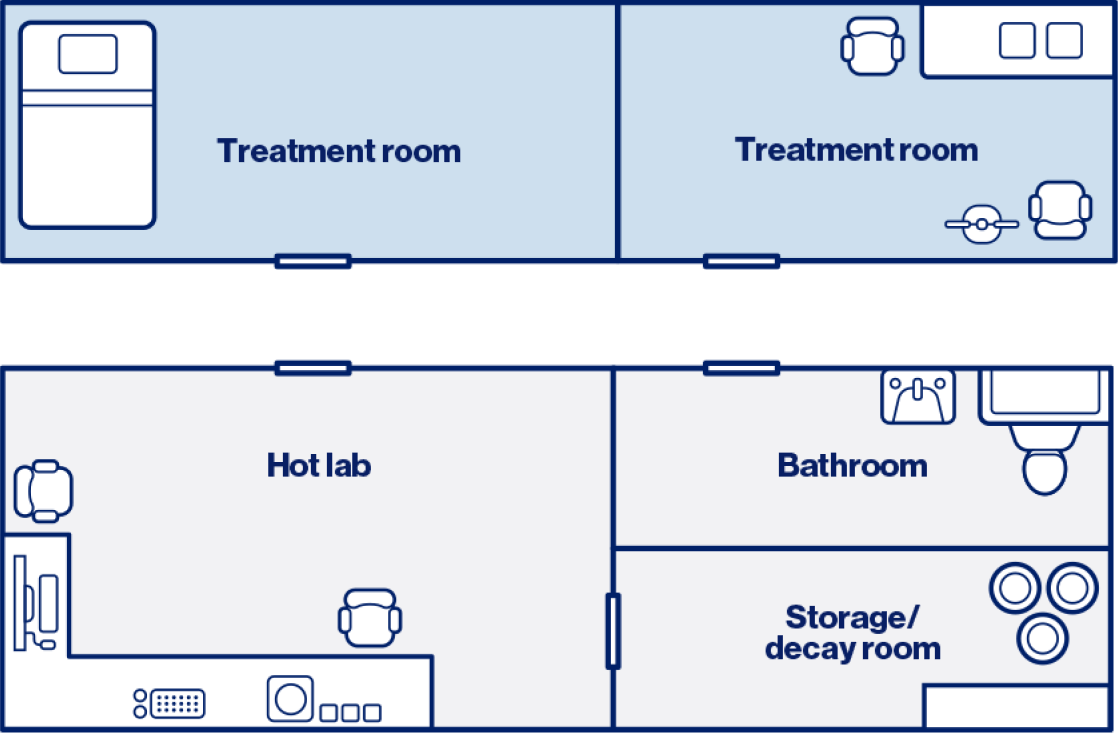
Diagram provided for illustrative purposes only; institutions should adhere to their internal guidance and are responsible for ensuring legal and regulatory compliance.
The treatment room is a designated area where RLT is administered directly to the patients. This space is segregated to minimize radiation exposure to surrounding areas and is typically located near patient monitoring stations for safe observation. Facility needs will depend on the treatment(s) being administered because visit lengths may vary.1-3
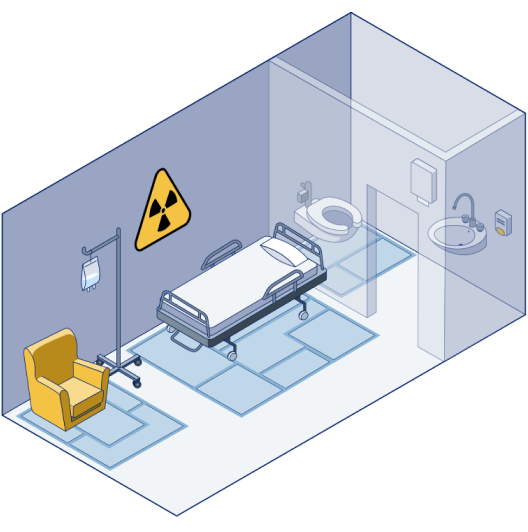
Key processes in this space4
- Administration of RLT according to the facility protocol
- Continuous patient monitoring (in person or remote) that may vary by treatment
- Ensuring patient comfort and safe administration
Facility flow
- Room preparation: Floors are lined with protective materials and patient furniture is covered with absorbent barriers1
- Patient prep and pre medication: The patient is brought into the room and assessed to ensure they are medically fit and able to adhere to radiation safety precautions upon discharge, and to determine if a full dosage of RLT can be administered. Then patient consent is obtained, an intravenous (IV) catheter is started, and the patient is provided with any necessary premedication as prescribed by the treating physician2,5
- RLT administration: The prepared radiopharmaceutical is delivered to the patient via the chosen administration method (eg, gravity, peristaltic pump, or syringe)5
- Observation: The patient remains under observation during and after administration to monitor for adverse reactions5
- Patient release: Once the patient-specific radioactivity has been calculated and determined to be safe in accordance with federal and/or state regulations, the patient is discharged with guidance on radiation safety to limit exposure for caregivers, sensitive populations including children and pregnant people, and other members of the general public6
See more about patient release calculations
Specific considerations


Expert insight
Room selection is very important. The room should not be carpeted, should be isolated and away from high-traffic areas, and should ideally be located at the end of a hallway to reduce radiation exposure to other patients. If available, a private room is preferred. It is also recommended that the room is close to the bathroom designated for radioactive patients.3,7,8
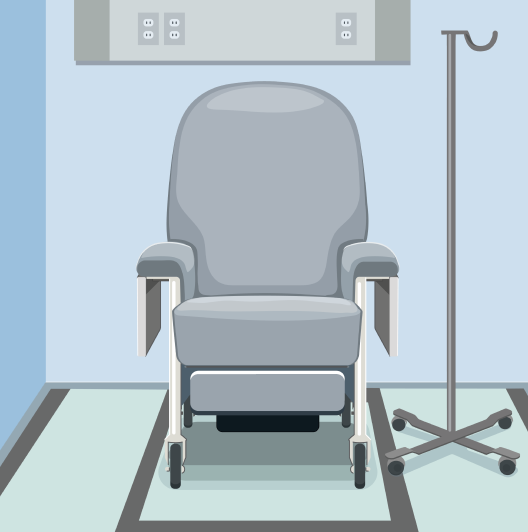
Treatment room setup
Depending on the treatment room layout and the treatment administered, the facility may have a bed or a chair. Typically, an infusion chair can be used for PLUVICTO® (lutetium Lu 177 vipivotide tetraxetan) and LUTATHERA® (lutetium Lu 177 dotatate) administration; a bed may be appropriate for LUTATHERA administration because the patient stays longer due to the protocol.2,3,4,9
Safety recommendations
To ensure safety and minimize contamination risks during administration procedures involving RLT, consider the following:
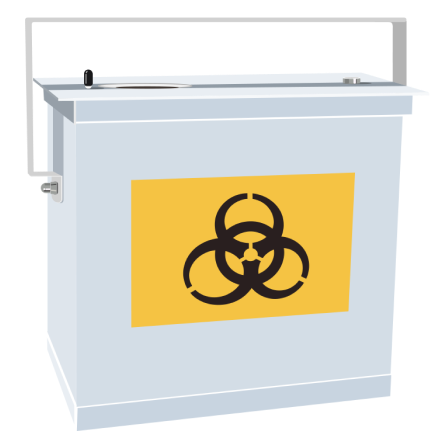
Waste management
A shielded sharps waste bucket is placed in the treatment room to dispose of materials that may be contaminated with radiopharmaceuticals, such as alcohol wipes, gauze, emesis basins, and intravenous supplies.4
After administration, any RAM waste is moved to the designated RAM waste decay space.3,10


Expert insight
To save space, the smallest feasible sharps container can be used and switched to a larger one as needed.4

Patient support
While most patients do not need to change clothing, scrubs can be provided in case of clothing contamination during or after the procedure.2
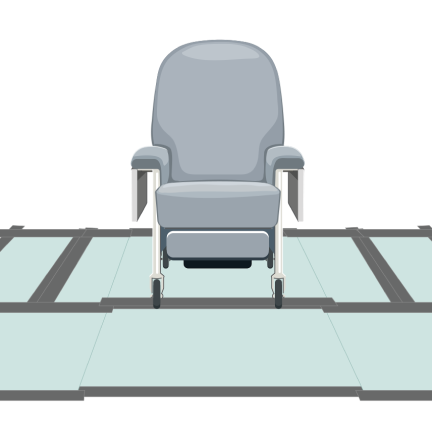
Spill prevention
Coverage of the floor around the treatment chair or bed with absorbent materials is strongly recommended, particularly when initiating the program. This practice can be adjusted over time as the team becomes more experienced in handling radiopharmaceuticals, patient selection, and support procedures.2,5
RLT administration
RLTs such as PLUVICTO and LUTATHERA can be administered using various techniques. Each approach has distinct considerations that are covered in the providing and administering RLT section. Equipment needs will vary based on the selected method, but experts recommend maintaining a comprehensive inventory, with backups of all necessary equipment to accommodate each administration technique.3-5
Patient monitoring
Patient monitoring is essential after RLT administration, particularly for patients who may need to remain in the treatment room for extended periods, such as LUTATHERA patients, who typically stay for approximately 6 hours.4,7 Remote monitoring options should be considered to ensure patient safety and comfort during this time.
